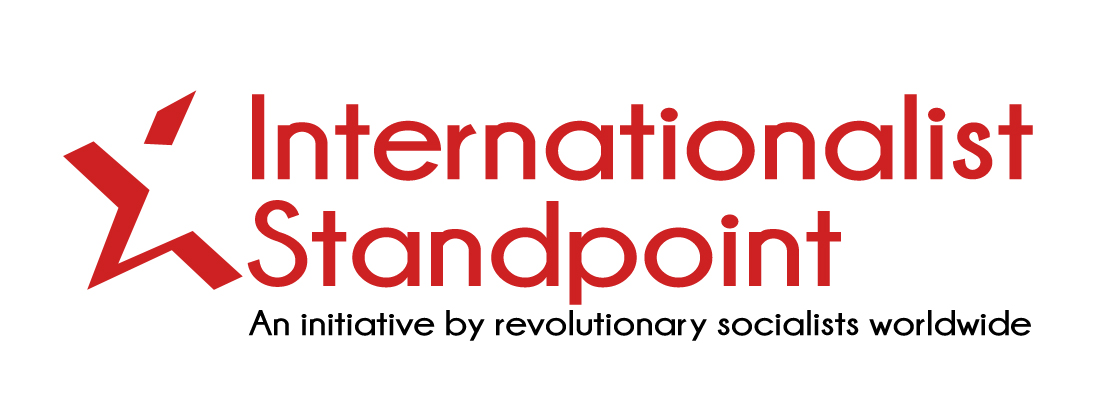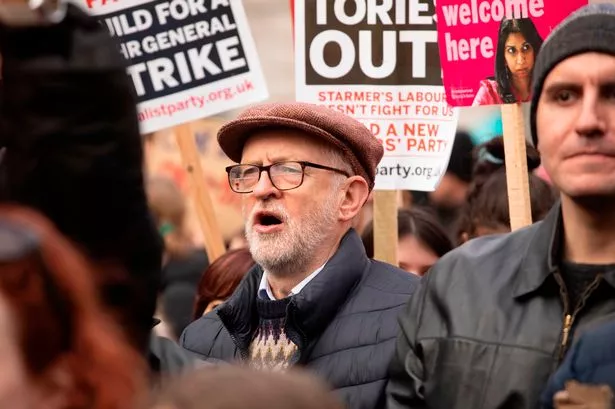The announcement of a new party by Jeremy Corbyn and Zarah Sultana is the most significant development in left politics across Europe since the period which saw the rise of SYRIZA in Greece and Podemos in Spain, 15 years ago. Over 700,000 people have now signed up to the idea of a new party. If this number is converted into actual membership, it will be larger than the Labour Party, the Conservative Party, the Green Party and Reform UK combined. It will be the largest party in Europe.
Initial momentum
The idea of a new party is now the common property of hundreds of thousands but as of now, the party does not yet exist. There is no membership, no programme and no structures. What does exist is “Collective” which is an umbrella grouping for more than 60 organisations, some of which are relatively large, and others which are small and locally based. What happens next isn’t entirely clear. The six MPs (Members of Parliament) associated with the project are to take a co-ordinating role, and it seems likely that there will be some form of organising conference in the next few months (possibly October) which will agree a party name and outline programme. Sultana is said to favour “the Left Party”, whilst Corbyn may argue for the current temporary name used for the initial launch-“Your Party”-becoming the permanent name. Corbyn has stated that there will be a political alternative at the ballot box by the time of the local elections in England. It is widely assumed that the new party will also contest the Scottish Parliament and Welsh Parliament (Senedd Cymru) elections in May 2026.
The 700,000 who have signed up have been motivated by a desire for a pro-worker, anti-racist and anti-war alternative, and there is every reason to believe that the vast majority will join the new party when that is possible to do so. There is real momentum behind this initiative, not least because it already involves six elected MPs. Corbyn, who was elected as an independent at the last general election, and Sultana, who was elected for the Labour Party before being suspended and then resigning, work with four other MPs who are elected as independents, primarily on the issue of Gaza (Shockat Adam, Adnan Hussain, Ayoub Khan and Iqbal Mohamed). The six form the Independent Alliance group, and all are expected to join the new party. At this stage the four independent MPs are unknown quantities. They work with Corbyn and have voted left since their election, but their trajectory is uncertain, and where they end up politically, especially if Gaza becomes a less prominent issue, is an open question.
Further Labour MPs may join, but there’s no indication that this is about to happen. John McDonnell, Corbyn’s deputy when he was leader of the party, has very firmly stated his intention to stay with Labour and to rebuild its left-wing. Diane Abbott, a long-term time associate of Corbyn, is once again suspended from membership, but there is nothing to indicate that she is about to jump. Other less prominent figures may move across, but it is possible that this will not happen unless there are further major upheavals within Labour, or left MPs conclude that they have no chance of being selected to stand again for Keir Starmer’s Labour Party.
Support from the trade unions as bodies, as opposed to trade union activists, will not easily be achieved. The trade unions were central to the formation of the Labour Party over a century ago and have sustained its existence ever since. Today, eleven unions are affiliated to the Labour Party and provide much of its funding. Importantly, the largest union, Unite, passed a motion at its recent conference in favour of a review of its link to Labour. This is a positive step, but the actual process by which it might decide to disaffiliate from the Labour Party and act on this decision will take several years, unless special steps are taken. It is unlikely that any major union will support the new initiative in its initial phase, with the possible exception of the the University and College Union. Smaller unions may act, and the Bakers Food and Allied Workers Union (BFAWU) seem to be fully supportive of the project.
Previous Initiatives: What is different this time?
Parliamentary elections in Britain use the first-past-the-post method, which means that new parties find it very difficult to get off the ground. This pattern has been broken in the recent period, and now both the Green Party and Reform UK have four MPs in Parliament. The idea that Britain has a “two and a half party system”-with only Labour or the Conservatives ever likely to be in a position to form a government, in coalition with the Liberal Democrats when necessary-is no longer valid. The fact that the new party has six MPs, including two with national prominence is a very important factor. In addition, it is reported that up to 200 local councillors may join, some of whom were elected as independents, but most of whom were elected as Labour and have since resigned over Palestine or the cuts Labour has implemented.
The authority of Corbyn, a relatively substantial presence in Parliament and on local councils, and a huge party membership, means that this initiative has a much greater chance of success than other attempts to create a left political alternative since the 1990s. When the Labour Party dropped “clause four” from its constitution (the clause committing the party to public ownership of large sections of the economy, which had been in place since 1918) many on the left began to raise the necessity for a new party of the working class.
In 1993 miners’ leader Arthur Scargill launched the Socialist Labour Party, but despite his authority, it never developed significant traction and had no success in elections. The Socialist Labour Party had a narrow approach to organisation: it demanded that anyone who wished to join must leave other organisations, and it would not allow for internal platforms or tendencies. The Socialist Party, which then had 5000-6000 members, for example, was unable to affiliate en-bloc and refused to dissolve into the SLP.
Attempts to coalesce the left in the Socialist Alliance in the early 2000s also failed. The main problem in the Socialist Alliance was the insistence of the Socialist Workers Party, the largest single component, on majority voting on key issues, rather than seeking to reach a consensus amongst the many groups involved. It was a stance that led the Socialist Party to withdraw, and the Alliance lost momentum and fell apart.
In this period, the Socialist Party began working with the railway workers union RMT, and stood in the European elections in 2004 under the “No2EU” banner. Subsequently the Trade Unionist and Socialist Coalition developed and has consistently stood in both parliamentary and local elections since, though with limited success. The RMT withdrew after a decade. TUSC is now fully committed to the new party initiative.
The RESPECT coalition was jointly launched by George Galloway, the Socialist Workers Party, and the Muslim Association of Britain in 2004, and initially was successful in returning Galloway to Parliament and a number of councillors in areas with large Asian populations. The structure of RESPECT was not open and democratic and ultimately, it was to prove a fragile arrangement when the SWP and Galloway fell out.
Since then, there have been several attempts to draw together broader coalitions, both in the period before and after Corbyn’s time as leader of the Labour Party. Whilst he was leader, most of the left either joined the Labour Party, or orientated towards the idea of a Corbyn led government-that is supported Corbyn from outside the Party. Ultimately, Corbynism was defeated, and the right wing within the Labour Party, once again, gained ascendency. The result is the Keir Starmer government, arguably the most right-wing Labour government ever.
Why was Corbynism Defeated?
Prospects for the new party will be bolstered by an understanding not just of the mistakes of previous initiatives outside the Labour Party, but also of why the Corbyn-lead Labour party was ultimately defeated. Most commentary on the left accepts that “Corbynism” was defeated because he and those around him were not prepared to take on right wingers within the Labour Party, especially the parliamentary Labour Party. It is further argued that he made a fundamental mistake in backing down in the face of a manufactured campaign which portrayed the left and the Labour Party as antisemitic. Some on the left argue that his unwillingness to support a second Scottish referendum on Independence was also a major cause of his inability to gain sufficient support from the electorate.
There is some truth in these arguments, of course, but in themselves, they are only partially true and an insufficient explanation. When Corbyn came to the leadership of the Labour Party, the entire apparatus of the ruling class immediately was brought to bear against him. Some of this was what everyone expects-for example, the tide of anti-Corbyn propaganda in the right-wing press-but even so called liberal or left leaning newspapers like the Guardian were profoundly anti-Corbyn. “He wasn’t given a chance” in common parlance. In such circumstances, even the most robust left leader would be at a profound disadvantage unless they could mobilise the membership of the party and its wider periphery. Corbyn should have fought for changes in the structure of the Labour Party to allow other left forces to be admitted and sought to neutralise the right-wing labour MPs. Simply removing all of these MPs was not easy to achieve, but it was not impossible.
Corbyn was also unable or unwilling to challenge Labour councils which implemented austerity budgets. In the poorer working-class areas Labour was seen as a party of austerity, and the Corbyn-leadership as distant and focused on the wrong issues. Corbyn failed to bring large swathes of the working class with him: it was a failure to provide a clear pro-working-class alternative that ultimately defeated Corbynism.
The new party must be capable of answering the questions of working-class people who all around them see a world in turmoil and are experiencing falling living standards and worsening public services. Those who voted for Labour, mostly without great expectations, but in the hope that things would improve, are totally disillusioned, and there’s a real danger that they will either fall into apathy or opt for Reform UK out of sense of despair. The new party must be able to answer the questions of working-class people in the most hard-pressed areas, in low paid jobs and in tenuous employment.
A party that speaks only to the university-educated or to public sector workers will not be capable of winning a majority in parliamentary elections. The new party must also orientate towards campaigns and struggles and not only focus on the electoral plane.
Corbyn has already outlined the need for a new party to be pro-worker, pro-public ownership, anti-war and anti-racist. Each of these areas, and others, requires discussion and debate, and through this process the adoption of a socialist programme.
Democratic Structures
The structures of the new party are being discussed but is not at all clear what the core organising group intend. “Collective” provides a model: it is not unlike the early days of the Labour Party, which came together as a democratic coalition and operated by consensus. In reality the fact that there are more than 60 organisations in Collective means that decision making be consensus is a recipe for paralysis. It is not in the interests of working-class people that a new party is unable to function effectively, and decisively when it matters. A balance will need to be found.
A one member, one vote model, which would involve all the potential 700,000 members in decision making has strengths and weaknesses. When Corbyn was leader of the Labour Party, an internal group known as Momentum was formed to support his leadership. Momentum grew quickly and had tens of thousands of members. It adopted a one member, one vote approach to squeeze out democracy and as a way of circumventing the activist layer: a largely passive membership, tended to vote for a line dictated from the top, without real discussion.
A hybrid model where the members have a say, but platforms or tendencies within the party also have a role is the most meaningful way to deliver an activist-based democracy. In this model the party will be based on its mass membership, but with platforms organised within the party putting forward political proposals and standing supporters for elections to leading bodies. A structure such as this at national level could be replicated at regional and local levels, with party branches as the key democratic structure, to ensure maximum devolved democratic decision making.
The prospects for a new party are bright. Already opinion polls suggest significant support. With the correct structures, but above all with an inspiring programme which points to the alternative of democratic socialism, there is every reason for optimism.



